Color-Changing Solar Lights: Colors & Power Explained
As the demand for eco-friendly and visually appealing outdoor lighting grows, color-changing solar lights have emerged as a popular choice for homeowners and garden enthusiasts. These innovative fixtures combine the energy efficiency of solar power with the aesthetic appeal of dynamic color shifts, transforming backyards, patios, and pathways into vibrant nighttime displays. In this article, we’ll dive into the technical workings of these lights, analyze their performance, share real user feedback, and offer practical solar light buying tips to help you choose the best models for your outdoor space.
The Technology Behind Color-Changing Solar Lights
At the heart of color-changing solar lights lies the integration of RGB LED technology and solar energy systems. RGB LEDs (Red, Green, Blue Light-Emitting Diodes) enable these lights to produce a spectrum of colors by combining different intensities of red, green, and blue light. A microcontroller within the light adjusts the output of each color channel, creating effects like smooth transitions, static colors, or flashing patterns. This color-changing mechanism allows users to customize their outdoor ambiance, whether for a festive event or everyday garden lighting.
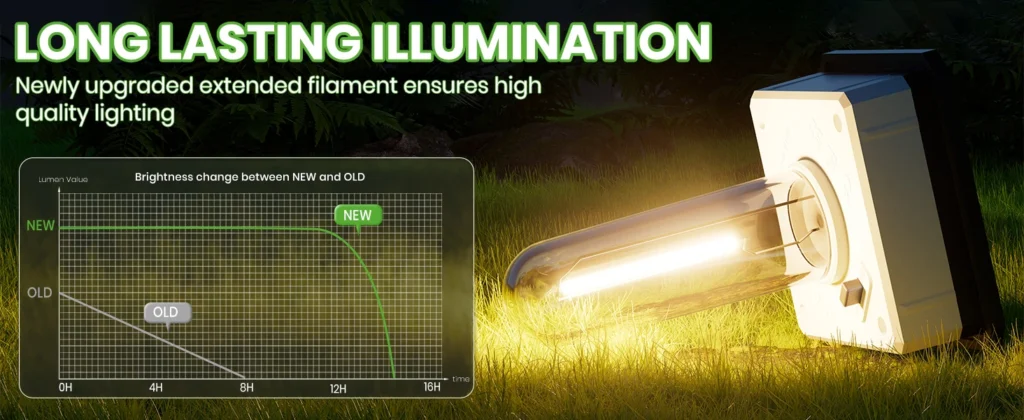
The solar power system is equally critical. These lights rely on photovoltaic (PV) panels, typically made of monocrystalline or polycrystalline silicon, to convert sunlight into electricity. Monocrystalline panels, known for their higher efficiency (15-20%), are common in premium models, while polycrystalline panels (13-16% efficiency) are more budget-friendly. The harvested energy is stored in rechargeable batteries, usually lithium-ion or NiMH, with capacities ranging from 2000mAh to 4000mAh. During the day, the solar panel efficiency determines how quickly the battery charges—typically, 6-8 hours of direct sunlight yields a full charge, powering the lights for 6-8 hours of illumination at night.
The interplay between these components is seamless yet sophisticated. A built-in light sensor ensures the device activates only in low-light conditions, preserving battery life. Some models include smart solar lighting features, like remote controls or apps to adjust color modes, adding convenience for tech-savvy users.
Performance in Diverse Conditions
One of the most discussed aspects of color-changing solar lights is their performance under varying weather conditions. On sunny days, these lights thrive, with solar charging efficiency peaking under direct sunlight. However, in cloudy or rainy conditions, the output of solar panels can drop significantly—sometimes by 50% or more. For instance, a study on solar lighting systems indicates that monocrystalline panels maintain better performance in low-light conditions compared to polycrystalline ones, making them a better choice for regions with frequent overcast skies.
Battery life is another key factor. Most color-changing solar lights offer 6-8 hours of illumination on a full charge, but this varies based on battery capacity and usage mode. For example, static color modes consume less power than rapid color-cycling modes. In rainy conditions, IP65 waterproof rating ensures durability, protecting the lights from water ingress. This rating, common in high-quality models, means the lights can withstand low-pressure water jets, making them ideal for outdoor use in wet climates.
Cold weather can also impact performance. Lithium-ion batteries, while efficient, lose capacity in sub-zero temperatures, potentially reducing runtime to 4-6 hours. NiMH batteries, though less efficient overall, are more resilient in cold conditions, making them a practical choice for colder regions. Regular maintenance, such as cleaning the solar panel surface to remove dust or debris, can boost charging efficiency by up to 20%, according to solar energy forums.
Real User Feedback from Online Communities
To understand how color-changing solar lights perform in real-world settings, we turn to user feedback from platforms like Reddit and gardening forums. Many users praise the color transition smoothness, with comments like, “The colors switch so fluidly, it’s like a light show in my backyard!” However, some note limitations in cloudy weather, with one Reddit user stating, “They’re great, but charging is slow on overcast days—sometimes they only last 4 hours.” This aligns with technical data showing reduced solar panel efficiency in low-light conditions.
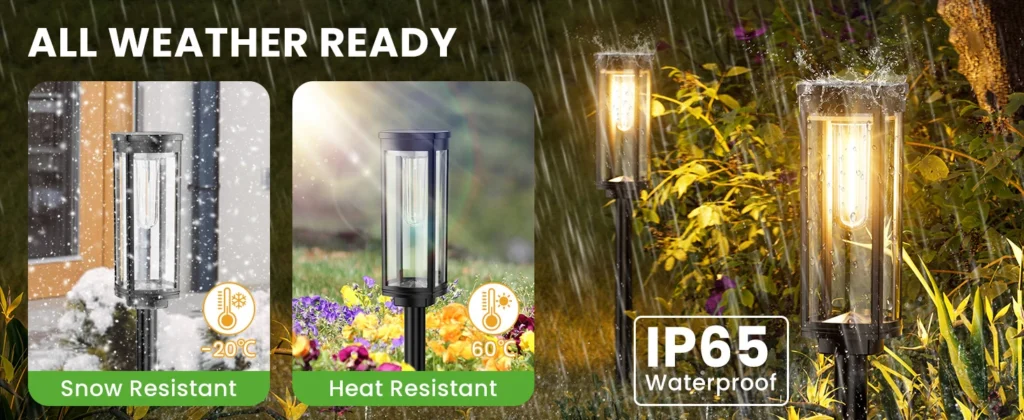
Durability is another highlight. Users frequently commend models with IP65 waterproof rating, noting their ability to withstand heavy rain. One Quora post mentioned, “My lights survived a stormy week and still look brand new.” However, some users report that cheaper models with lower battery capacities (e.g., 1000mAh) struggle to maintain brightness throughout the night, emphasizing the importance of choosing 2000mAh battery capacity or higher.
Aesthetic appeal is a major draw. Users on social media platforms like Pinterest share photos of color-changing solar lights illuminating gardens, with vibrant blues, reds, and greens creating a magical ambiance. One user described their setup: “I lined my pathway with these lights, and the color changes make evening walks feel special.” Negative feedback often centers on installation, with some users wishing for clearer instructions or sturdier mounting options.
Unique Advantages of Color-Changing Solar Lights
Beyond their technical prowess, color-changing solar lights offer distinct benefits that set them apart from traditional outdoor lighting. Their eco-friendly lighting credentials are undeniable—by harnessing solar energy, these lights reduce electricity costs and carbon footprints. For example, a single solar light can save approximately 50 kWh annually compared to grid-powered alternatives, based on average usage patterns.
The outdoor ambiance enhancement is another standout feature. Unlike static white lights, the dynamic color shifts create a festive or relaxing atmosphere, perfect for garden parties, holiday decorations, or quiet evenings. Models with multi-mode color settings allow users to tailor the lighting to specific occasions, such as warm hues for cozy gatherings or vibrant colors for celebrations.
Installation is also a breeze. Most color-changing solar lights require no wiring, as they rely solely on solar power. This makes them ideal for renters or those seeking low-maintenance solutions. Simply stake them into the ground or mount them on a wall, and they’re ready to go. This ease of use, combined with their visual appeal, makes them a favorite among DIY home decorators.
Buying Tips for Choosing the Best Color-Changing Solar Lights
When shopping for color-changing solar lights, several factors can ensure you get the best value and performance. Here are key considerations:
- Battery Capacity: Opt for models with at least 2000mAh battery capacity to ensure 6-8 hours of illumination. Higher capacities (e.g., 3000mAh) offer longer runtimes, especially in color-cycling modes.
- Waterproof Rating: Look for an IP65 waterproof rating or higher to guarantee durability in rain or snow. This is crucial for outdoor longevity.
- Solar Panel Type: Choose monocrystalline panels for better solar charging efficiency, especially if you live in an area with limited sunlight.
- Color Modes: Select lights with multi-mode color settings, such as static, fade, or flash options, to suit different moods or events.
- Build Quality: Check for durable materials like stainless steel or high-grade plastic to withstand outdoor elements. User reviews often highlight models with sturdy stakes for ground installation.
- Brightness: Ensure the lights provide at least 50-100 lumens for effective outdoor ambiance enhancement. Brighter options (200+ lumens) are better for pathways.
When browsing online, check user reviews on platforms like Amazon or home improvement forums for insights into real-world performance. For example, a top-rated model on Amazon praised for its color transition smoothness has a 4.5-star rating from over 2,000 reviews, with users noting its reliability in various weather conditions.
Conclusion
Color-changing solar lights are more than just outdoor fixtures—they’re a blend of cutting-edge technology, eco-friendly design, and aesthetic versatility. By leveraging RGB LED technology and solar power systems, these lights deliver vibrant, customizable illumination while reducing environmental impact. Their performance in diverse conditions, backed by positive user feedback, makes them a reliable choice for enhancing outdoor spaces. Whether you’re lighting up a garden party or adding flair to your patio, these lights offer a perfect balance of form and function. Use our solar light buying tips to find a model that meets your needs, and enjoy the magic of color-changing illumination in your outdoor oasis.

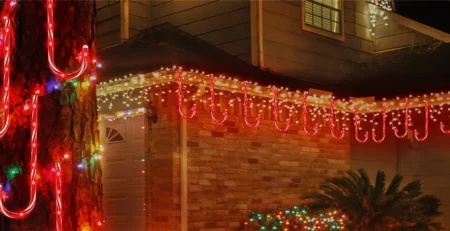
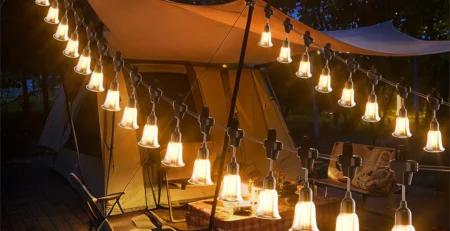

-6-1-450x231.webp)
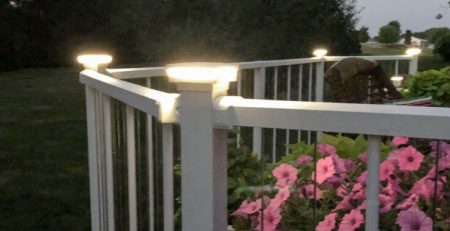

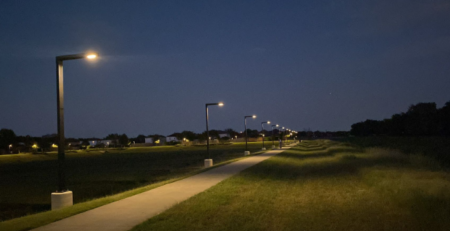
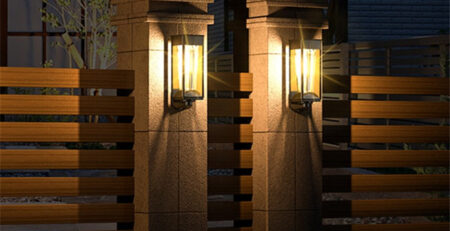


Leave a Reply